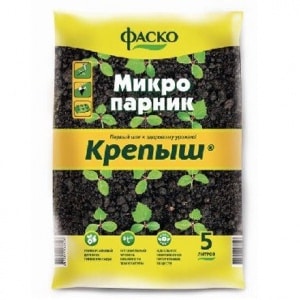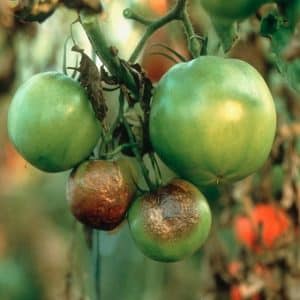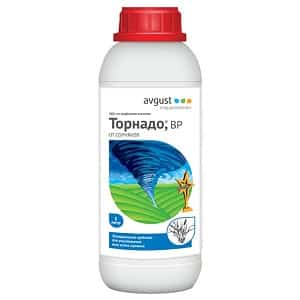Time-tested Titan tomato for growing in open ground
The Titan tomato is distinguished by its high taste qualities and shows excellent yield from year to year. The mid-late variety performs well both in open ground and in greenhouse conditions. Let's take a closer look at why gardeners love the Titan tomato so much, and find out the secrets of a rich harvest.
Description of the variety
The Titan tomato grows in 120-140 days from planting. The bushes are low, only 40-70 cm in height, and do not require tying or pinching. The foliage is average. Its compact size allows you to grow the variety at home - on a windowsill or loggia.
Fruit characteristics and yield
 The shape of ripe tomatoes is round and even, the skin is smooth and red. The pulp is juicy and sweet, there are few seeds. The weight of a tomato varies from 80 to 120 g.
The shape of ripe tomatoes is round and even, the skin is smooth and red. The pulp is juicy and sweet, there are few seeds. The weight of a tomato varies from 80 to 120 g.
Thanks to its dense structure, Titan is well stored and can be transported over long distances. The variety is resistant to diseases and unpredictable weather conditions. From one bush, summer residents harvest about 5 kg of ripe and tasty tomatoes.
Titan pink
The Titan variety is so named because of the dark pink color of its fruits. Unlike its “relative,” Titan pink mid-early produces its first harvest in 100-110 days.
Ripe tomatoes are small, about 100 g. However, in greenhouse conditions there are specimens weighing 200-250 g. They are unpretentious in care and are valued by farmers for their versatility: Pink titanium is good both fresh and in preparations for the winter.
How to grow seedlings
Experienced farmers recommend planting the Titan variety in seedlings. This makes it easier for the plant to adapt to environmental conditions and show the best results. Let's take a closer look at what is required for tomato seedlings.
Seed preparation
Only high-quality seed material is selected for planting. Gardeners recommend purchasing seeds from trusted suppliers and carefully reading the information on the packaging.
In order for future tomato bushes to show excellent results, you need:
- Check the material for germination. To do this, place the seeds in a jar of water and stir gently. Those seeds that remain on the surface are empty and are not suitable for seedlings. Those seeds that have sunk to the bottom are taken out and dried thoroughly.
- Disinfect the material using aloe juice, potassium permanganate solution or hydrogen peroxide. Disinfection reduces the risk of developing diseases in the future.
- Harden the seeds. For a week, the seeds are placed in the freezer every day for 1-2 hours, increasing the time each time. Thanks to hardening, seeds quickly adapt to external conditions.
- Sprout the seeds. To do this, they are wrapped in damp gauze and left for 1-2 days in a warm, bright place.
Container and soil

Seedlings are grown in a variety of containers: flower pots, boxes, plastic cups. Many people prefer to plant tomatoes in milk cartons, which are thoroughly disinfected before planting. Special peat tablets or plastic cassettes, which are sold in stores for gardeners, are also popular.
Some summer residents use ready-made purchased soil “Krepysh” or “Universal” as soil, while others prefer to prepare the soil themselves.This requires soil from the garden, peat and humus in a ratio of 5:1:1.
For looseness, river sand or sawdust is added, which act as natural drainage. This mixture must be disinfected with a manganese solution.
Sowing
Soil is placed in a clean and dry container so that it fills 1/2 of the container. Using a simple pencil, make small grooves in the ground at a distance of 10 cm from each other.
The seed is placed in the holes, sprinkled with earth on top and gently patted down. Water the seedlings with warm, settled water, cover with film and place on the windowsill.
Important! If you are planting several varieties at once, make a label for each, indicating the name of the variety and the date of planting. This will help you avoid getting confused and plant tomatoes in open ground on time.
Growing and care
Seedlings require sunlight. If there is a deficiency, the seedlings are illuminated with special phytolamps. Water the Titan tomato once every 5-7 days. It is not recommended to use cold tap water for irrigation, as its composition increases the risk of developing fungi and infections. It is important not to over-moisten the soil - because of this, the quality of the seedlings decreases, they become elongated and weak.
After 2 weeks, the seedlings are fertilized with organic fertilizers, for example, liquid bird droppings. The next feeding is carried out after 10-15 days. It is recommended to use mineral complexes and phosphorus-potassium compounds along with organic matter. The optimal air temperature for growing the Titan variety is from 17 to 22 degrees.
How to grow tomatoes
Before planting seedlings in the garden, prepare the beds and soil. In the fall, the soil is carefully dug up, all debris and weeds are removed from the soil, and manure is added.With the arrival of spring, the soil is dug up again so that it becomes loose and nutritious.
Landing
During planting, it is important not to damage the fragile and still weak roots of the plants, so they are replanted as carefully as possible. The distance between the bushes should be 40-50 cm.
For landing they take the sunniest and most spacious place in the garden, away from groundwater. The best predecessors for tomatoes are cereals and legumes. It is not recommended to plant Titan after other tomatoes or potatoes.
Care
Caring for tomatoes consists of standard procedures. The variety does not require the formation and garter of a bush, which distinguishes it from other tomatoes.
To get a rich and tasty harvest, you need:
- Water beds once every 5-7 days. One bush consumes 1.5-2 liters of water. The frequency and amount of watering depends on weather conditions. If the summer is hot and humid, the procedure is performed less frequently.
- Regularly loosen the soil before watering. Loosening improves oxygen access to the roots and makes the soil more airy.
- Remove weeds that take away vitamins and nutrients from tomatoes.
- Add organic and mineral feeding. Tomato Titan reacts well to urea, liquid mullein, ash, nettle, and ammonium nitrate. Fertilizing not only strengthens the immunity of the bushes, but also improves the taste of the fruit.
Features of cultivation and possible difficulties
Before planting, experienced farmers recommend liming the soil. This reduces the acidity of the soil, fills it with nutrients and useful microelements. To do this, gardeners use lime or dry wood ash. For 1 sq. m. consume 5 liters of substance.
To make tomatoes grow tasty, foliar feeding is carried out.They protect vegetables from pests and diseases. As foliar feeding, spraying with a solution of nettle, ash or Bordeaux mixture is used. 1 bush requires 1.5 liters of solution.
Diseases and pests

Late blight is recognized as the most common disease. This is a fungal disease that appears as brown, brown and yellow spots on leaves and fruits. Infection occurs through seeds, soil, and garden tools.
The disease actively develops in conditions of high humidity and heat. For prevention purposes, use manganese or copper sulfate. If the bushes are already sick, it is better to remove the infected specimens and burn them away from the beds.
In addition to late blight, root rot attacks the beds. The disease affects the roots of the bushes, which soon causes the entire plant to die. Liming and ash are used against rot. Another disease is called powdery mildew. Dew looks like a white coating on the leaves. It is recommended to fight it with a soap solution.

The most common insect pests found on tomatoes are the Colorado potato beetle, mole cricket, aphid or whitefly.
Insects suck nutritious juices from the plant, destroy roots and fruits.
For prevention and control, professional preparations “Tornado”, “Oxychom”, “Maxim” are used.
The nuances of growing in open ground and in a greenhouse
When growing tomatoes in a greenhouse, it is important to maintain the required microclimate. Greenhouses have high humidity, which often leads to fungi and other diseases.
In order to prevent diseases, summer residents are advised to regularly ventilate the room using special windows in the walls. Before planting, all hard surfaces (doors, windows, panels) are disinfected with a manganese solution.
When growing in open ground, monitor the level of applied nitrogen-containing fertilizers. Their excess leads to foliage actively developing and fruits growing slowly. In case of an excess of nitrogen, the beds are watered abundantly with water, after which a layer of straw is placed on them.
Harvesting and application
 Tomatoes are harvested as they ripen: some gardeners prefer to pick vegetables at the stage of milky ripeness, others prefer to pick them when they are already red and ripe. It is not recommended to keep fruits in the garden beds for too long, as they begin to lose their elasticity and taste.
Tomatoes are harvested as they ripen: some gardeners prefer to pick vegetables at the stage of milky ripeness, others prefer to pick them when they are already red and ripe. It is not recommended to keep fruits in the garden beds for too long, as they begin to lose their elasticity and taste.
Titan variety tomatoes are excellent for preparing canned and pickled dishes. Vegetables are also used in recipes for salads, side dishes, soups and even jam. Of course, this is not a usual delicacy for tea, but an original sweet and sour sauce for meat dishes.
Interesting! Many housewives use tomato pulp as a rejuvenating face mask. Regular use of the mask improves skin elasticity and smoothes out fine wrinkles.
Advantages and disadvantages of the variety
Titan tomatoes have a number of positive properties. They are tasty, aromatic and suitable for preparing a wide variety of dishes. Unpretentious compact bushes do not require individual care.
Vegetables rarely get sick and show consistently high yields both in open ground and in greenhouses. Elastic fruits are perfectly stored and do not lose their taste after heat treatment.
Among the disadvantages, summer residents note long ripening times. In cool and short summer conditions, tomatoes may not have time to show good results. This is especially true for the Urals and Siberia.
Read also:
The legendary tomato variety is the Inkas tomato.
Miniature bushes with neat tomatoes - “Torch” tomatoes.
The Lemon Giant variety is a tomato with an extraordinary taste.
Reviews from gardeners
Among the overwhelming majority of positive reviews, sometimes there are less enthusiastic ones. What do Russian gardeners think about the Titan variety?
Lyudmila, Voronezh: “I prefer to grow compact and unpretentious bushes. They decorate the area, while requiring a minimum of attention. Tomato Titan is just one of these varieties. I recommend him for landing."
Maria, Cheboksary: “I love the sweetness and juiciness of Titan tomatoes. I collect them at the ripe stage, the tomatoes are ripening on the balcony. I use it for pickles; the vegetables don’t crack and look appetizing in the jar.”
Oleg, Ufa: «After excellent reviews of the Titan variety, I expected a rich and tasty harvest. However, the results upset me: the maximum harvest from 1 bush was 1.5 kg. And the summer was warm, and he cared according to all the rules. I can’t understand what’s the matter.”
Conclusion
The tasty and beautiful Titan tomato has won the attention of many gardeners. Some are attracted by high yields, others are happy to see neat bushes on their plot. Titan requires minimal maintenance time. The main thing is to water the beds and apply fertilizers on time.
Tomatoes store well and can easily be transported over long distances.